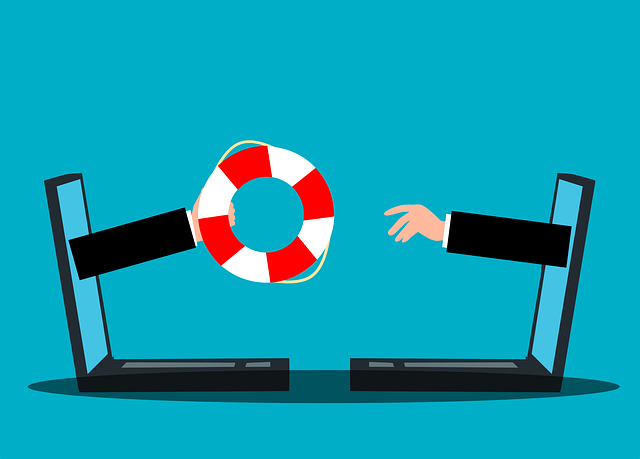Business Interruption Insurance (BII) is a vital safety net for companies facing unexpected downtime due to various events, offering compensation for lost revenue and additional expenses during recovery periods. Key policy types include Standard and Extended BII, with varying coverages and exclusions based on events like natural disasters, cyberattacks, equipment failure, and labor disputes. Comprehensive risk assessment and careful review of policy provisions are essential for adequate protection. Real-world case studies highlight the effectiveness of BII in mitigating financial losses and enabling swift business recovery.
In today’s unpredictable business landscape, safeguarding against unexpected downtime is paramount. Business interruption insurance offers a crucial safety net, compensating for lost revenue and extra expenses during unforeseen events like natural disasters, cyberattacks, or civil unrest. This comprehensive guide delves into the intricacies of business interruption insurance, exploring its key coverage, common causes of downtime, policy types, risks to watch out for, claims process, and real-world success stories. Empower yourself with knowledge on how this vital protection can keep your business resilient during turbulent times.
Understanding Business Interruption: What It Covers

Business Interruption Insurance is a safety net designed to protect businesses from the financial losses incurred during unexpected downtime. It covers a wide range of events that can disrupt operations, including natural disasters, cyberattacks, equipment failure, and labor disputes. This type of insurance isn’t just about replacing physical assets; it focuses on keeping your business afloat by compensating for lost revenue and additional expenses during the recovery period.
When you have Business Interruption Insurance, policyholders are typically reimbursed for the difference between their regular operating income and reduced revenues during the time of disruption. It can also cover extra costs incurred to maintain operations at a reduced level, such as temporary relocation expenses or increased marketing costs to attract customers following a closure. This ensures that businesses can continue paying employees, suppliers, and other essential expenses while they work towards recovery.
Common Causes of Business Downtime and Their Impact

Business downtime can strike in various forms, from natural disasters to cyberattacks, and each has a profound impact on operations and finances. Understanding common causes is essential for businesses to make informed decisions regarding risk management, especially when it comes to Business Interruption Insurance (BII).
Key triggers include technological failures, such as data breaches or server crashes, which can halt services and incur significant financial losses. Additionally, physical events like fires, floods, or storms disrupt operations, leading to downtime and potential long-term damage. Employee misconduct or human error are also prevalent causes, resulting in productivity loss and increased costs. These events underscore the need for BII, which provides financial protection during unforeseen interruptions, enabling businesses to recover swiftly and maintain stability.
Types of Business Interruption Insurance Policies

Business Interruption Insurance is a vital safety net for companies facing unexpected downtime. These policies are designed to protect against financial losses incurred during periods of halted operations, whether due to natural disasters, cyberattacks, or other disruptions. There are several types of Business Interruption Insurance Policies available, each tailored to specific needs:
1. Standard Policy: This is the most common type, covering a wide range of events like fire, flooding, and vandalism. It provides a fixed amount of coverage for loss of income during the recovery period. However, it may exclude certain events like civil unrest or war unless added as endorsements.
2. Extended Business Interruption (EBI) Policy: EBI offers additional protection by extending the duration of coverage beyond the standard policy limits. It also includes optional features like extra expenses incurred to maintain operations during downtime and extended period benefits, ensuring businesses can recover more swiftly.
Key Provisions and Exclusions to Look Out For

When considering Business Interruption Insurance, understanding key provisions and exclusions is paramount. These policies typically cover losses incurred due to unforeseen events that disrupt operations, such as natural disasters or cyberattacks. Look for clauses that detail the duration of coverage, including waiting periods and maximum coverage limits. It’s crucial to comprehend what activities are included in the interruption definition; some policies may exclude certain industries or specific types of downtime.
Exclusions vary across providers, so carefully review the policy. Common exclusions include events like scheduled maintenance, strikes, and power outages that don’t cause physical damage. Additionally, check for limitations on profit loss coverage; some policies only compensate for direct costs while others provide a percentage of lost revenue. Understanding these nuances ensures your business is adequately protected during uncertain times.
How to Assess Your Business's Risk for Downtime

Assessing your business’s risk for downtime is a critical step in determining if Business Interruption Insurance is right for you. Start by evaluating your operations and identifying potential threats. Consider factors like natural disasters, cyberattacks, equipment failure, or workforce shortages that could disrupt your services or production. Make a list of these risks and analyze their likelihood and potential impact. For instance, if your business relies heavily on technology, assess the probability of a cyber incident and the resulting downtime it could cause.
Next, examine your company’s resilience. How quickly can you recover from each identified risk? Look at your existing backup systems, data security measures, disaster recovery plans, and supplier relationships. Businesses with robust contingency plans may require less extensive Business Interruption Insurance coverage, as they can mitigate the effects of downtime more effectively. Conversely, those lacking such preparedness might find insurance crucial for financial stability during unexpected disruptions.
Benefits of Having Comprehensive Coverage

Having comprehensive business interruption insurance offers numerous advantages for companies navigating uncertain times. This type of coverage provides financial protection during periods of downtime caused by unforeseen events, such as natural disasters, cyberattacks, or civil unrest. It ensures that businesses can continue operations or resume them swiftly after a disruptive incident, minimizing the impact on their bottom line.
One key benefit is peace of mind, knowing that unexpected interruptions won’t cripple the business financially. It allows companies to focus on recovery and rebuilding rather than worrying about immediate cash flow. Additionally, Business Interruption Insurance can cover additional expenses like emergency services, temporary facilities, or extra staff costs incurred during the downtime. This ensures a smoother transition and reduces the overall economic strain on the business.
Claims Process: What to Expect and Prepare

When a business faces unexpected downtime, the last thing on your mind is navigating the claims process. However, understanding what to expect and preparing in advance can help ease this often stressful situation. Business Interruption Insurance (BII) is designed to cover losses incurred during these critical times, but the path to reimbursement isn’t always straightforward.
The first step involves reviewing your policy terms carefully to confirm coverage for your specific downtime scenario. Then, you’ll need to gather essential documentation, including proof of loss, financial statements, and any contracts or agreements relevant to the interruption. Promptly notify your insurance provider of the incident, usually via phone or online reporting system. From there, a claims adjuster will be assigned to review your case, verify details, and determine the scope of your coverage and potential reimbursement amount. Be prepared for regular communication with them throughout the process.
Case Studies: Real-World Examples of Successful Claims

In the realm of Business Interruption Insurance, real-world case studies offer a compelling look at its effectiveness. For instance, consider a small retail business that experienced a significant fire causing extensive damage to their physical location and inventory. Thanks to Business Interruption Insurance, they were able to cover not only the cost of rebuilding but also ongoing expenses during the closure period. This support enabled them to reopen swiftly, minimizing long-term financial strain and ensuring customer loyalty.
Another case involves a tech startup hit by a cyberattack, leading to data breaches and system failures. Their Business Interruption Insurance policy compensated for lost revenue due to decreased productivity and disrupted operations. The financial relief allowed the company to invest in enhanced security measures, recover quickly, and maintain its market position amidst the crisis. These examples underscore the vital role of Business Interruption Insurance in safeguarding businesses against unforeseen events and facilitating swift recovery.
